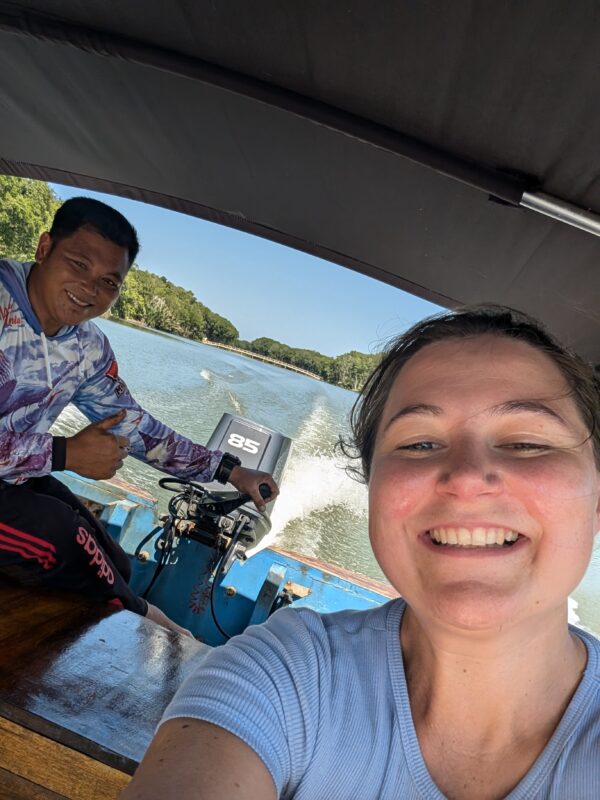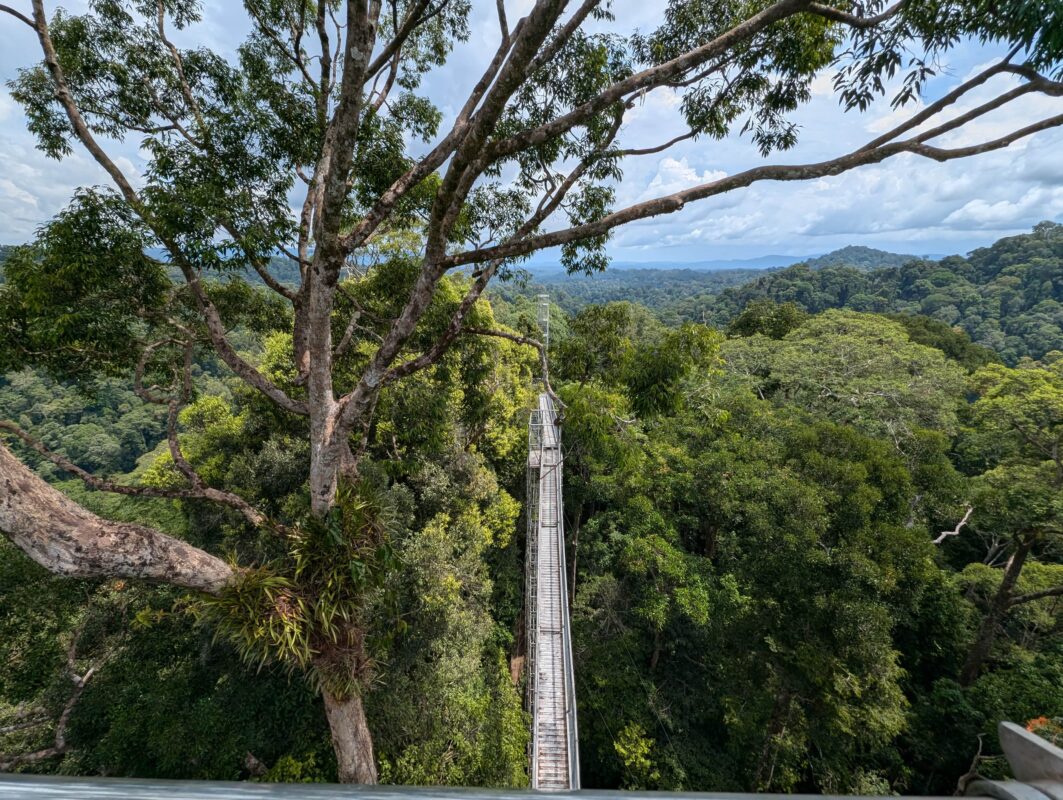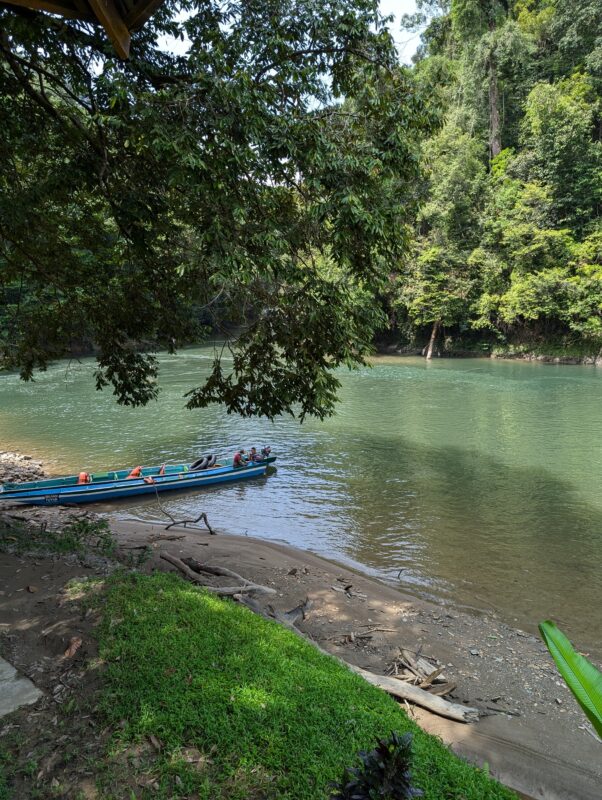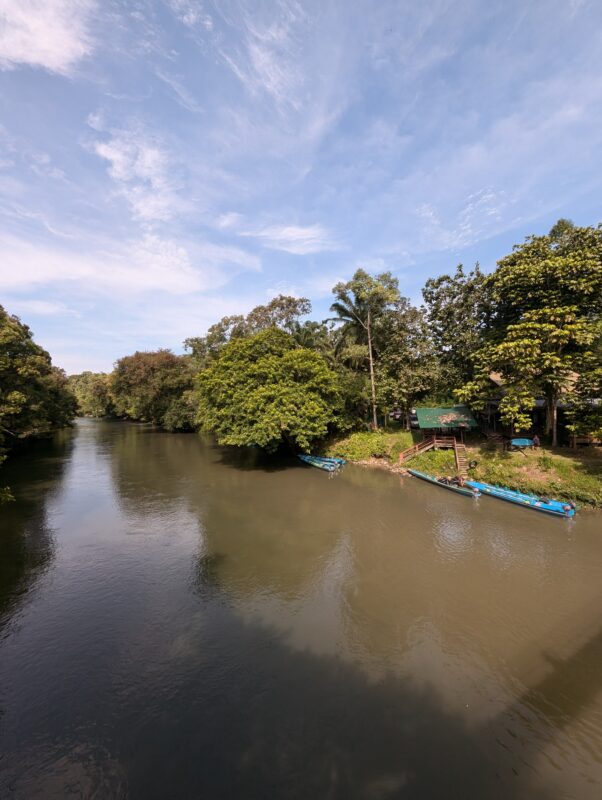If you’re planning a trip to Brunei, I bet you have quite a few questions!
It’s one of the least-visited countries in Southeast Asia, with many tourists citing there to be not much to do.
But I recently spent 3 days in Brunei and largely, found the locals to be very welcoming and there were a couple of stand-out attractions.
Here’s my full guide to Brunei!
Arriving in Brunei

Touching down in Brunei is straightforward, but there are a few things you’ll want to know before you arrive.
Immigration
There’s a form you need to fill out before landing. Here’s a link to the form.
For British citizens, no visa is required for a stay of up to 90 days.
If you’re from another country, check your own country’s requirements just to be sure.
Customs
If you’re carrying any alcohol, you need to declare it at customs.
Brunei is a dry country – you can’t buy alcohol anywhere – but you’re allowed to bring in a small amount for personal use. Just make sure it’s declared!
Getting to the city
The next step was getting into the city, and that turned out to be super easy as well!
We grabbed a taxi from the airport kiosk, but as we didn’t have any cash on us, we charged the fare to our hotel room.
The hotel, Radisson Blu, then gave us the cash to pay the driver and put it on our bill.

Where to stay in Bandar Seri Begawan
We stayed in the Raddison Blu in Bandar Seri Begawan.
The location is right in the city centre, which is super convenient, but the hotel was a bit of a mixed bag.
The beds were comfy and the bathroom was decent – with a good, powerful shower.
They had filtered drinking water and ice on every floor, which was needed in the heat!
The hotel also has a pool, which is actually pretty rare in Bandar Seri Begawan.
The rooms were… a bit musty. It wasn’t terrible, but definitely noticeable.
The decor felt a little dated, like it hadn’t seen a refresh in a while.
We also had to pay extra for breakfast, but it was a buffet and pretty good! The staff were very friendly and helpful too.
Take a look at the hotel here.
Safety in Bandar Seri Begawan
One thing that really stood out to me in Bandar Seri Begawan was just how safe it felt.
Walking around the city, even on my own, I didn’t encounter a single issue. No hassle and no catcalling.
The city is very walkable, which adds to that sense of security.
There are proper pavements almost everywhere, traffic lights where you’d expect them and pedestrian crossings.
Language in Brunei
English is widely spoken across the country, making it easy to communicate with locals.
From taxi drivers to hotel staff, most people speak English fluently.
While the official language is Bahasa Melayu (Malay), you’ll find that English is the go-to language in most interactions; it was even spoken amongst staff in the hotel.
Money in Brunei
Managing money in Brunei is straightforward, but there are a few points to keep in mind.
The official currency is the Brunei dollar (BND) but Singapore dollars (SGD) are also widely accepted.
The two currencies are pegged to each other, so you can use either one for any transaction.
ATMs are plentiful in Bandar Seri Begawan, and most accept international cards, so accessing cash isn’t an issue.
Credit cards are also accepted in most hotels, restaurants, and larger shops – but having some cash on hand for smaller purchases or at street markets is advisable.
Brunei is generally more expensive than some of its Southeast Asian neighbours, so be mindful if you travel from Malaysia or elsewhere in the region!
What to Wear in Brunei

Brunei is a modest country with a strong Islamic culture, so dressing respectfully is important.
There are no strict dress codes for tourists but I recommend covering your shoulders, chest and midriff – and opting for long skirts or trousers.
Wearing a T-shirt and longer trousers is respectful and comfortable in the hot weather.
If you plan to visit a mosque, you’ll need to cover your hair, but most mosques provide robes with hoods for visitors.
Outside of mosques, covering your hair isn’t required, but dressing modestly will help you fit in with local customs.
Key Attractions in Bandar Seri Begawan

Bandar Seri Begawan may not be a sprawling metropolis, but it’s packed with a few key attractions that are definitely worth your time. Here are the highlights:
- Sultan Omar Ali Saifuddien Mosque: This mosque is breathtaking and easily one of the most beautiful I’ve ever seen. Its gleaming domes and intricate architecture are a must-see.
- Jame’ Asr Hassanil Bolkiah Mosque: Another stunning mosque, this one’s a bit closer to the city centre and equally impressive. The craftsmanship and attention to detail in its design are something to marvel at!
- Gadong Night Market: If you’re a foodie or love experiencing local culture, this is the place to be. The market comes alive in the evening with a variety of street food stalls offering everything from noodles to spring rolls. It’s a great way to taste local flavours without breaking the bank.
- Kampong Ayer (Water Village): Known as the world’s largest water village, Kampong Ayer is a unique community built on stilts over the river. You can take a short boat ride to explore this fascinating area where locals have lived for centuries.
- River Tours: For a bit of nature, head down to the river and hop on a boat tour. You can glide through the waters, taking in the lush surroundings and, if you’re lucky, spot some proboscis monkeys.
- Taman Tasek Lama (City Waterfall): Just a short walk from the city centre, this park is home to a lovely waterfall that’s perfect for a morning or afternoon stroll. The park is popular with locals who come here to jog or relax, and it’s a nice escape from the city’s heat!
- Royal Regalia Museum: This museum is filled with extravagant displays of gold, bling and gifts from other world leaders. It’s a bit over the top, but worth a look.
Food in Brunei
When it comes to food in Brunei, you might be pleasantly surprised!
While the country may not have the same culinary diversity as some of its Southeast Asian neighbours, what it does offer tasty and satisfying!
Street food is where Brunei really shines.
The Gadong Night Market is a must-visit for any foodie, with stalls serving up everything from noodles to spring rolls and fried tofu.
The flavours are simple but delicious, and you can eat well without spending much.
I’m a vegetarian, and I found it pretty easy to get by, although I did have to clarify a few times to make sure my food was free of meat, eggs and fish.
The vendors were accommodating, even if they seemed a bit puzzled by my requests at first!
If you’re more of a sit-down restaurant person, you’ll find a mix of local eateries and a few international options in Bandar Seri Begawan.
The local cuisine leans heavily on rice and noodles, with influences from neighboring Malaysia and Indonesia.
While it may not have the same variety as you’d find in Malaysia, the food is still flavorful and fresh.
Alcohol is not served in Brunei, given the country’s strict laws – you won’t find any bars or pubs.
Visiting Ulu Temburong National Park

Ulu Temburong National Park is the crown jewel of Brunei’s natural attractions and, in my opinion, the highlight of any trip to the country.
If you’re a nature lover or just looking to experience the untouched beauty of a pristine rainforest, this is the place to be.
Getting there is an adventure in itself!
The journey typically starts with a drive to the rainforest lodge, followed by a boat ride through winding rivers that cut through the dense jungle.
The boat trip alone is worth the visit. It’s a peaceful and scenic way to take in the lush greenery and the vibrant ecosystem that thrives here.
Once you arrive at the park, there are a few activities you can dive into.
We started with a hike to a watchtower that offers an incredible panoramic view of the rainforest canopy.
It’s a bit of a climb – and the ladders in the canopy towers are slightly nerve-wracking – but the sight at the top is breathtaking.
You’re surrounded by an endless sea of trees, with the sounds of the jungle all around you.
Tubing was also on offer, but in all honesty, there could be saltwater crocodiles in this river, so even if the chance of encountering one was minimal, I chose not to take it.

One thing that struck me about Ulu Temburong was just how clean and pristine it is.
The park is meticulously maintained, and there’s a strong emphasis on conservation.
The water is crystal clear, and the entire area feels almost untouched by human hands.
It’s probably the cleanest rainforest I’ve ever visited!
We booked a tour with Freme. Click here to see it.

Just a note…
There are some policies in Brunei that are absolurely abhorrent to me, specifically to do with the LGBTQIA+ community.
However, I believe that people aren’t their governments, and as I was able to visit independently I wanted to do so.
I wouldn’t have visited if it meant working with the government etc.
